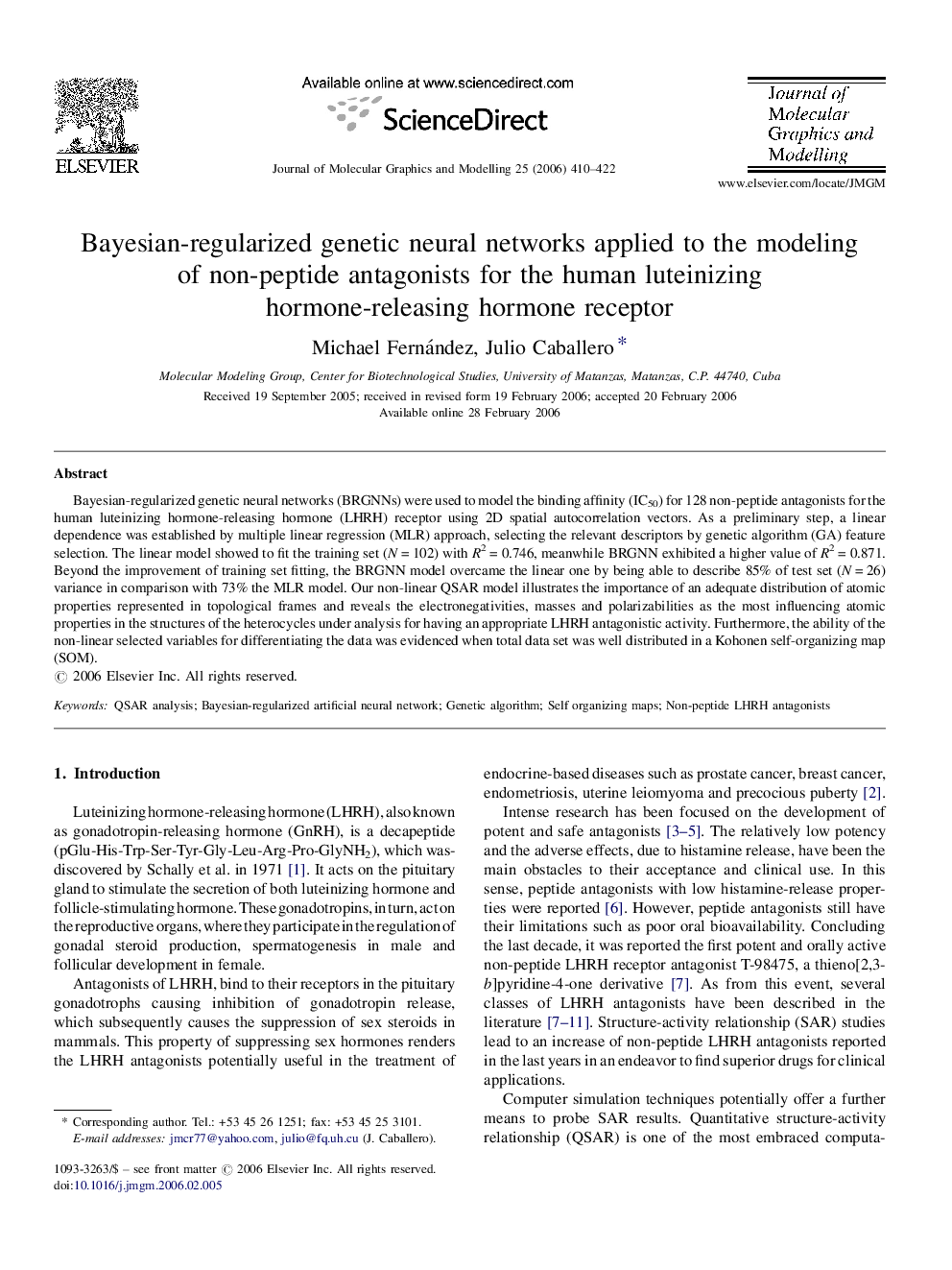| Article ID | Journal | Published Year | Pages | File Type |
|---|---|---|---|---|
| 444801 | Journal of Molecular Graphics and Modelling | 2006 | 13 Pages |
Bayesian-regularized genetic neural networks (BRGNNs) were used to model the binding affinity (IC50) for 128 non-peptide antagonists for the human luteinizing hormone-releasing hormone (LHRH) receptor using 2D spatial autocorrelation vectors. As a preliminary step, a linear dependence was established by multiple linear regression (MLR) approach, selecting the relevant descriptors by genetic algorithm (GA) feature selection. The linear model showed to fit the training set (N = 102) with R2 = 0.746, meanwhile BRGNN exhibited a higher value of R2 = 0.871. Beyond the improvement of training set fitting, the BRGNN model overcame the linear one by being able to describe 85% of test set (N = 26) variance in comparison with 73% the MLR model. Our non-linear QSAR model illustrates the importance of an adequate distribution of atomic properties represented in topological frames and reveals the electronegativities, masses and polarizabilities as the most influencing atomic properties in the structures of the heterocycles under analysis for having an appropriate LHRH antagonistic activity. Furthermore, the ability of the non-linear selected variables for differentiating the data was evidenced when total data set was well distributed in a Kohonen self-organizing map (SOM).
